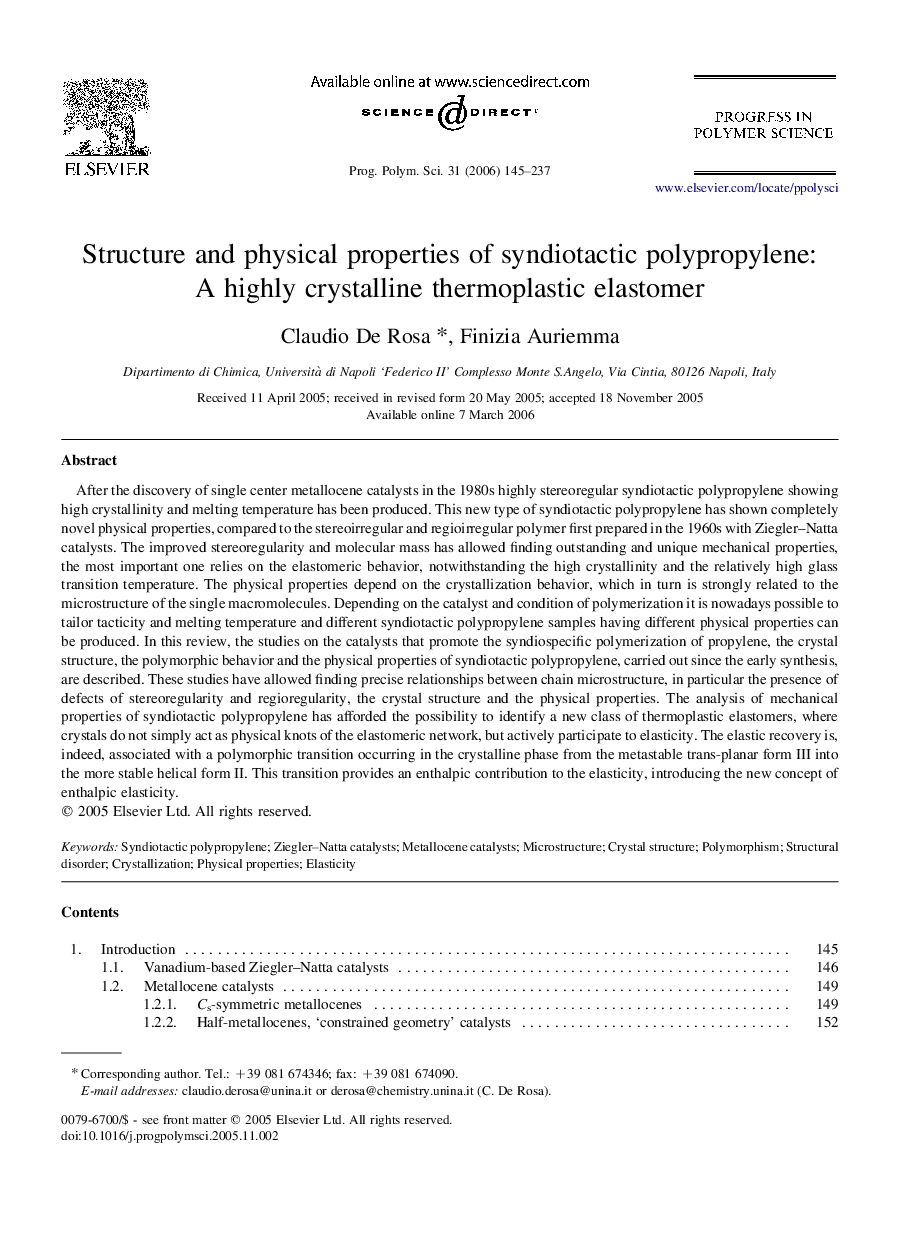| Article ID | Journal | Published Year | Pages | File Type |
|---|---|---|---|---|
| 5209156 | Progress in Polymer Science | 2006 | 93 Pages |
After the discovery of single center metallocene catalysts in the 1980s highly stereoregular syndiotactic polypropylene showing high crystallinity and melting temperature has been produced. This new type of syndiotactic polypropylene has shown completely novel physical properties, compared to the stereoirregular and regioirregular polymer first prepared in the 1960s with Ziegler-Natta catalysts. The improved stereoregularity and molecular mass has allowed finding outstanding and unique mechanical properties, the most important one relies on the elastomeric behavior, notwithstanding the high crystallinity and the relatively high glass transition temperature. The physical properties depend on the crystallization behavior, which in turn is strongly related to the microstructure of the single macromolecules. Depending on the catalyst and condition of polymerization it is nowadays possible to tailor tacticity and melting temperature and different syndiotactic polypropylene samples having different physical properties can be produced. In this review, the studies on the catalysts that promote the syndiospecific polymerization of propylene, the crystal structure, the polymorphic behavior and the physical properties of syndiotactic polypropylene, carried out since the early synthesis, are described. These studies have allowed finding precise relationships between chain microstructure, in particular the presence of defects of stereoregularity and regioregularity, the crystal structure and the physical properties. The analysis of mechanical properties of syndiotactic polypropylene has afforded the possibility to identify a new class of thermoplastic elastomers, where crystals do not simply act as physical knots of the elastomeric network, but actively participate to elasticity. The elastic recovery is, indeed, associated with a polymorphic transition occurring in the crystalline phase from the metastable trans-planar form III into the more stable helical form II. This transition provides an enthalpic contribution to the elasticity, introducing the new concept of enthalpic elasticity.
